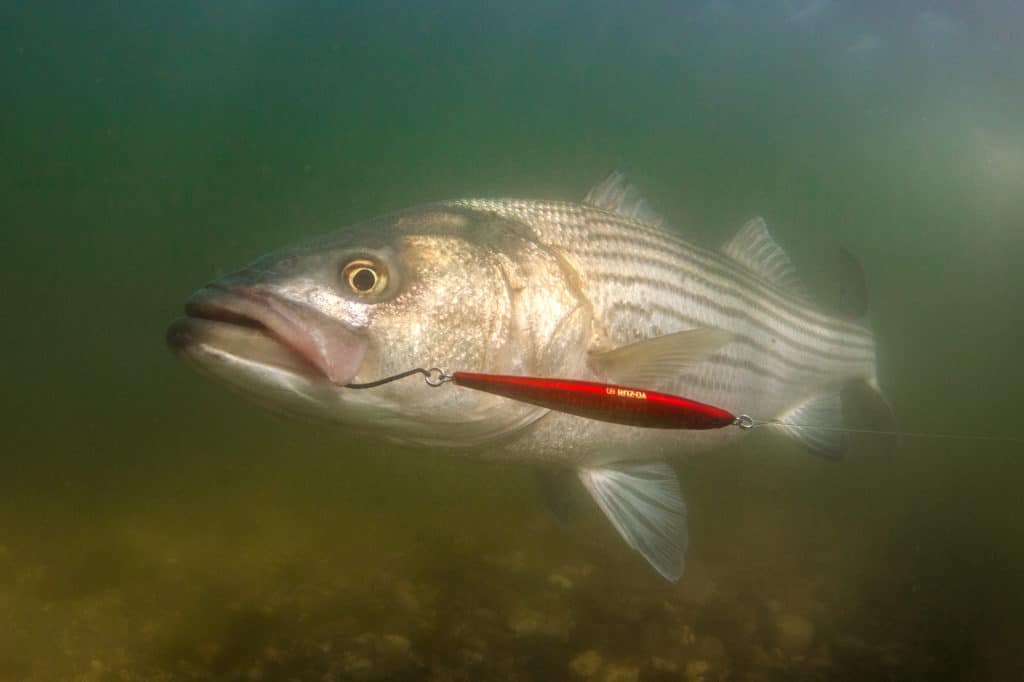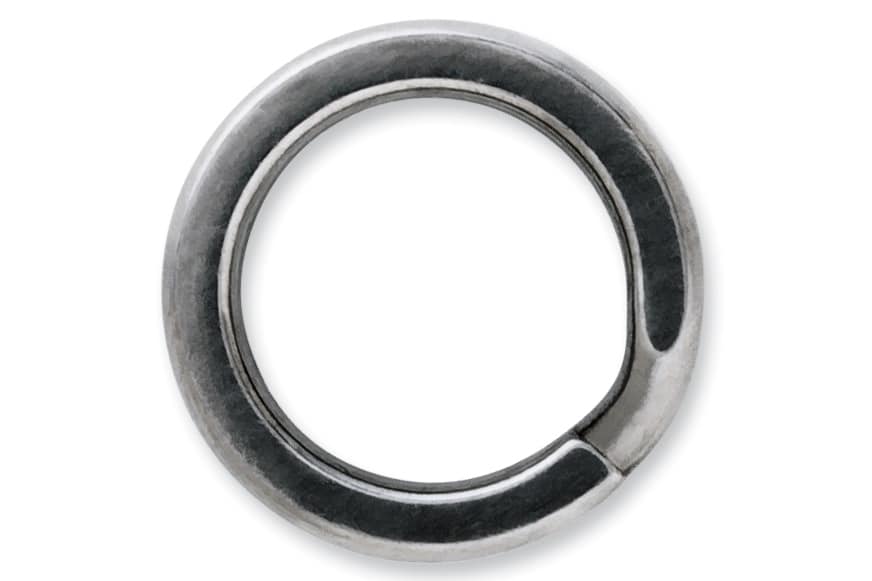
One of the tiniest pieces of fishing tackle can make all the difference between landing and losing a fish. The gear is so small it doesn’t register on a bathroom scale. Of course, we’re talking about fishing split rings.
“We were casting in an area that held some really big tuna,” says Capt. Josh Zacharias, of Cape Cod’s Outermost Angling Charters. “My client launched a cast, and an estimated 800-pound bluefin crashed his topwater lure. The explosion was as fierce as you might imagine.”
After the fish made two or three blistering runs with the boat in pursuit, Zacharias’ angler locked down the drag and started to regain line on his Shimano Stella’s spool. That’s when the lure came unbuttoned.
“We noticed the forward treble hook was missing from the lure,” Zacharias recalls. “Though the split ring was still there, it looked like a paper clip that had been straightened.”
Targeting tuna strong enough to give even heavy tackle a workout can lead to unexpected gear failures, but the missed tuna in this extreme example shows just how important split rings for lures are to anglers. “These days, I try not to target the larger fish on lighter tackle for this reason, but we still hook them from time to time,” Zacharias says.
Zacharias has modified his tuna-plugging rigs over the years, never once shying from split rings. Twelve feet of 100-pound-test wind-on leader ties to a 230-pound Spro swivel. Between the lure and swivel, he attaches an Owner Hyper Wire split ring. The split-ring-and-swivel combination allows for quick lure changes with help from sturdy hands and pliers.
Split rings come in different weights, materials and sizes; understanding the options available allows you to pick the right ring for your style of fishing. What are split rings used for in fishing? Split rings are most commonly used to attach lures to the leader or hooks to a lure. To cover most classes of fish, top manufacturers produce split rings from 10- to 420-pound-test.
How Fishing Split Rings are Built

A split ring starts as a straight piece of round wire.
“It’s essentially a spring,” says Jack Butts, president of Rosco Terminal Tackle. “Split rings are fabricated on the same type of machine. Our coil is made and then cut with either 30- or 45-degree ends.”
Rings are then tempered at high temperatures to achieve the hardness of steel needed so they can withstand their force rating, adds Tony Shitanishi, marketing manager of Owner American Corporation.
Stainless steel, with its corrosion-resistant properties, is the best material for heavy-duty saltwater rings. Popular brands and models include VMC SSSR stainless-steel split rings, Spro Power split rings, Rosco split rings and Owner’s Ultra split rings.
The gauge of wire determines the strength, points out Syd Rives, sales manager of Spro Corp. Thankfully, most manufacturers list the ring’s size and pound-test on the packaging. Most manufacturers also have their own split ring size chart available online. A typical ring size for larger yellowfin tuna is VMC’s No. 6 split ring, testing 231 pounds.
Different manufacturers I interviewed all agreed that circular rather than oval split rings are the most versatile and strongest shape. The dependable circular shape allows anglers to easily attach lures or hooks while providing better freedom of movement, says Rives. One manufacturer felt that oval split rings are a current fad that likely won’t have much staying power.
“Strength-wise, circular is the strongest shape because there is even distribution of force around the ring when pulling, as opposed to an oval split ring that can stress the ring in some places more than others,” explains Shitanishi. “The ring is only as strong as the weakest point.”
Using Split Rings for Fishing

Split rings have a number of uses when it comes to plugs. How to use split rings for fishing is up to the individual angler. First off, we all have a favorite lure model or manufacturer that might not incorporate hardware up to snuff for the style of fishing we prefer.
“Some lure manufacturers will use a cheaper ring on their products,” says Butts. “This is apparent by corrosion, flaking of the finish, and rings not closing back because they have been overstretched. Sometimes it’s necessary to replace the split rings on your favorite lure.”
A quick swap-out of split rings at the hook hangers, and even of the fishing hooks too, turns an unreliable lure into a go-to plug. Too many anglers cast a plug without even considering possible modifications.

While those split-ring pliers are out, add a split ring to the line-tie of the lure. VMC’s LTSR line-tie split ring is a tear-drop option. Swimming plugs often need split rings at the line-tie, as do sinking glide baits and wakebaits that rely on action beneath the water’s surface. Shy away from split rings with topwater baits — a ring can actually make the bait nose-heavy, disrupting the lure’s action.
“If you are walking a bait on top, most anglers prefer the direct line-tie so you have a better feel for your lure and are able to snap it back and forth quickly with direct force,” says Shitanishi. “Some anglers prefer split rings on lipped and vibrating baits so the bait can oscillate better while being reeled in one direction.”

One last tip, not related to plugs: Consider adding a split ring to a live-bait hook before tying it to the leader.
“Adding a split ring to the hook enables better natural bait action in the water,” says Rives. Of course, some hooks now come with a solid ring already attached at the eye — a similar approach to provide increased action while baitfishing.
Comparing Fishing Solid Rings and Split Rings

Anytime an angler uses a split ring, there’s some risk of chafing the knot at the split ring’s ends or of the knot slipping out of the split ring itself. That’s why some anglers use a solid or welded ring, especially when working metal jigs or casting iron offshore.
For example, the line-tie on metal jigs that feature assist hooks is a solid metal ring; it provides the most secure connection while jigging once a fish is hooked. Regional iron used on the West Coast are sold with solid, not split, rings.
“The torque from twisting against a hard, bony jaw while battling wahoo hooked on casting lures has a frequent tendency to open the split rings,” says Capt. Tim Ekstrom, of San Diego’s Royal Star Long-Range Sportfishing. “Nowadays soldered rings are used in our fishery. The welded rings, with very few exceptions, do not fail.”
Iron such as the High Tide, Tady, Salas, Sumo and Raider are all sold on the tackle shelves prepared with welded rings.
“The only time now that we’ll use a split ring is if a welded eye loop breaks or is compromised when the fish is landed,” says Ekstrom. “The swimming-type iron all require a ring at the tie-end to create the action that attracts the strike. Typically, the rings on those style lures have a larger diameter than the vast majority of the split rings that I’ve seen.”








